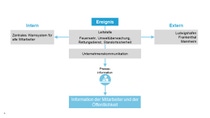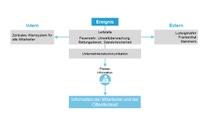Ludwigshafen
The annual Major Incident Drill at BASF
During BASF's annual major incident drill at the Ludwigshafen site, 100 emergency responders were on the ball today.
They deployed 24 vehicles and the turbo extinguisher trucks to rescue injured employees after a fire on a natural gas pipeline, carried out fire-fighting measures and protected surrounding buildings from overflowing flames. "In case of an emergency, our emergency responders must work very closely together. That is why the internal and external fire departments, emergency medical services, site security, environmental monitoring, employee care team and the affected plant regularly train the procedures and measures," said Michael Heinz, Member of BASF’s Board of Directors and Site Director. BASF's emergency medical services was supported by the large-capacity ambulance of the Ludwigshafen professional fire department.
The BASF site fire department in Ludwigshafen has over 180 employees. It is responsible for emergency response at the site as well as for central tasks within BASF's global emergency response organization. It also provides technical assistance in emergencies, advises other companies on fire safety issues and contributes its expertise to the "Transport Accident Information and Assistance System" (TUIS) of the German Chemical Industry Association (VCI).
With this major incident drill, BASF is training for emergencies at its Ludwigshafen site and demonstrating in this way:
- How the emergency medical services, the site security, the environmental monitoring, the employee care team and the fire department work togehter.
- How the fire department carries out fire-fighting measures and human rescue.
- How the site ensures the care of a large number of injured people.
- How the supervisory authorities are provided with information in the case of an incident.
- How the press and neighbours around the site are informed.
- How operational know-how is used for emergency response.


